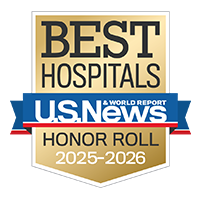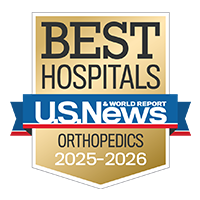Tennis Elbow

Overview
Tennis elbow, also called lateral epicondylitis, is a common condition involving the muscles and tendons of the outer forearm, just below the elbow. A tendon is a tough band of tissue that connects muscle to bone. The tendons involved in tennis elbow attach the extensor muscles of the forearm to the prominent outer part of the elbow bone, called the lateral epicondyle. Repeated contraction of the forearm extensor muscles – used when extending the wrist (pulling the hand back, as in the hand signal to stop traffic) and with gripping or twisting movements – can lead to tiny tears in the tendon that cause pain at the lateral elbow. Pain may spread into the forearm and wrist. Despite the name, tennis elbow affects many people who never play tennis.
The exact tendon most commonly involved in tennis elbow connects to a muscle called the extensor carpi radialis brevis. This muscle becomes overused with repetitive arm and wrist movements, such as in painting; using hand tools, such as screwdrivers and hammers; or from long hours of manipulating a computer mouse. In racket sports like tennis, the tendon is overstressed when a player uses an improper grip or backhand technique.
Our approach to tennis elbow
The team at UCSF includes primary care sports medicine doctors; orthopedic surgeons who specialize in sports medicine, including elbow injuries; athletic trainers; and physical therapists. These experts work together to relieve pain and restore mobility, so that patients can return to their normal lives and favorite activities.
Awards & recognition
-

Among the top hospitals in the nation
-

Best in Northern California and No. 6 in the nation for orthopedic care
Signs & symptoms
People with tennis elbow may experience:
- Recurring pain in the upper forearm on the side away from the torso and just below the elbow joint, especially after activity (less commonly, pain that radiates or shoots down the forearm toward the wrist)
- Pain with shaking hands, turning a doorknob, or gripping and lifting even a light object, like a coffee mug
- Difficulty extending the wrist fully
- Ongoing intermittent discomfort (sometimes continuing weeks to months, or even years, without appropriate care)
Diagnosis
Doctors can usually diagnose tennis elbow through a physical exam alone. Patients are tender at the outer elbow, in the area of the lateral epicondyle, and it hurts to extend the wrist, especially against pressure. Elbow X-rays may be ordered if the doctor suspects abnormal calcium deposits, bone spurs or a joint problem. A diagnostic ultrasound or an MRI is sometimes ordered if the diagnosis is unclear or the patient doesn't improve with treatment.
Treatments
For most people, tennis elbow gets better simply by taking a break from aggravating activities and following a regular stretching routine. Icing the area and taking anti-inflammatory medications may be recommended, especially if the pain started recently. Physical therapy can help by strengthening the affected muscles.
Since tennis elbow pain is caused by repetitive wrist movements, a rigid Velcro wrist brace is sometimes recommended to immobilize the wrist. An elbow wrap is also helpful for some patients.
Various injections can be considered if symptoms persist. Cortisone (an injectable steroid) can reduce inflammation and thus decrease pain. It's usually given with lidocaine, an anesthetic that provides immediate pain relief, and ultrasound imaging may be used to guide placement of the injection. However, the effects of this treatment may not last long. Depending on the individual case, other treatments may be considered, such as trigger point or platelet-rich plasma injections, or a procedure called dry needling.
For the small number of patients who don't get better with nonsurgical treatments, surgery may be a reasonable option. In one procedure, the tendon is cut loose from its attachment to the lateral epicondyle, which eliminates the stress on the tendon but may weaken the muscle. Another surgical technique involves removing the injured area of the tendon and repairing any tears.
UCSF Health medical specialists have reviewed this information. It is for educational purposes only and is not intended to replace the advice of your doctor or other health care provider. We encourage you to discuss any questions or concerns you may have with your provider.









